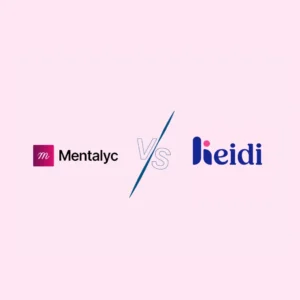Strength-based therapy is a client-focused model that aims to identify and build on an individual’s strengths, capacities, and resources to foster personal growth and resilience. In contrast to more conventional problem-centered models of therapy, which seek to identify and repair deficits, the strength-based model invites clients to identify their current strengths and use them as a foundation upon which to solve problems. This practice is also consistent with values in positive psychology and is used extensively across therapies, such as counseling, social work, and coaching.
Origins and Theoretical Foundations
Strengths-based model developed from social work and positive psychology and gained stronger usage towards the end of the 20th century. Earlier visionaries like Martin Seligman, originator of positive psychology, and Donald Clifton influenced this paradigm with a focus on strength-based leadership. This practice is drawing on humanistic psychology, where focus is kept on personal actualization and potential, rather than solution-focused treatment, with the focus on the potential in the future rather than the problematized past.
Core Principles of the Strength-Based Approach
This is founded on a number of principles. First, all people have strengths upon which to build in an effort to improve their well-being. Second, individuals are capable and can grow and change despite, not because of, adversity. Third, therapy must be solution-focused as opposed to problem-focused. Fourth, the therapeutic relationship must be collaborative and allow the client to be an active participant in the healing process. Lastly, interventions need to be culturally relevant and suitable to the client’s personal values and experiences (Ein and Idriyani, 2024.)
Identifying Strengths in Clients
One of the crucial elements of this strategy is client empowerment through alerting the client to their strengths. Some therapeutic methods that therapists use to detect a client’s strengths are strength-based assessment, storytelling, and reframing to positive purposes. Strengths frequently are personal (e.g., tenacity, empathy), attained skills (e.g., problem-solving, communication), or obtainable resources (e.g., supportive relationships, community participation). Identifying such strengths empowers the client more in self-efficacy and in one’s perceived capability.
Techniques and Interventions
Therapists employ a range of interventions to help clients discover and tap into their strengths. They strive to shift the direction of work from problems to solutions and to restore a sense of agency in clients. The most effective strength-based interventions are:
- Scaling Questions: A solution-focused method where the clients rate, on a scale of 1 to 10, how confident they are, how much progress they’ve made, or how they feel. The therapist’s example question would be, “How confident do you feel about being able to cope with stress, on a scale of 1 to 10?” With a rising score over time, clients realize their improvement and discover their personal strengths in.”.
- Strength Journaling: Journaling in a strengths journal or journaling regarding enjoyable experiences has the tendency to raise the awareness level of clients regarding their strengths. Clients can be requested to journal regarding the way they overcome challenging situations, when they felt proud of themselves, or compliments from other people.
- Altering Adverse Experiences: The therapists help the client alter adverse experiences by indicating what was gained or how resilience surfaced. For example, instead of viewing an initial failure as evidence of ineptness, a client is brought to recognize it as a trial of strength and growth.
- Narrative Therapy: This method assists clients in reauthoring their own stories in a manner that is strength-based and not deficit. By redescribing how they conceptualize what has happened to them in the past, clients can construct a more empowering self-narrative (Silverman et al., 2023.)
- Guided Imagery and Visualization: Therapists can employ guided exercises in which clients imagine themselves solving problems successfully. This serves to reinforce the idea that they possess the inner resources required to manage challenging situations.
- Strength-Based Goal Setting: Clients are asked to set goals from a strength-based perspective instead of trying to overcome weakness. For example, instead of stating, “I need to get over being nervous in social situations,” a client might reframe their goal as, “I would like to build on my strength at relating to people in comfortable situations and gradually reach out further socially.”
Applications in Different Therapeutic Settings
Strength-based intervention is highly adaptable and can be implemented in a variety of therapy settings.
- Individual Therapy: Strength-based interventions are applied primarily to cure clients with depression, anxiety, trauma, and low self-esteem in individual therapy. For example, a stressed client will be reminded of earlier instances in which he or she successfully coped with stress, strengthening his or her coping ability.
- Family Therapy: Family therapy applies strength-based interventions where conflict rather than strengths in the family is focused on. With collaboration, problem-solving, and emotional support, the family is able to rebuild the trust and strengthen the relationship to be more solid.
- Group Therapy: Strength-based therapies are employed in most of the support groups to empower them. In recovery from alcohol and drug abuse, in bereavement therapy, or in mental illness support groups, strength-based practice enhances the understanding and resiliency culture.
- Social work and community interventions: Strength-based therapy. Strength-based therapy is a prevalent form of social work intervention to help individuals who are faced with systemic problems such as poverty, homelessness, or discrimination. By reflection on one’s strengths and resources within the community, individuals can develop effective plans.
- Career Counselling and Coaching: Strength-based intervention is also effective in career counseling as well, where the client gets aware of his strength and capability to make well-informed decisions for his career and build confidence towards professional competence
Benefits of a Strength-Based Approach
Strength-based practice has a number of advantages for clients and therapists.
- Greater Motivation and Self-Worth: Clients are usually confident and self-motivated about having what they want occur when they are focused on what they have ability in instead of what is wrong with them.
- Greater Resilience: Focusing on past success allows clients to build resilience, which allows them to deal with future problems better (Onyeka et al., 2022.)
- Increased Therapeutic Alliance: Strengths-based therapy provides an empowering, collaborative therapeutic relationship between the therapist and client which makes the experience of therapy fruitful and enjoyable.
- Sustainable Change: As an alternative to deficit-based approaches that increasingly reinforce the continuance of insufficiency feelings, strength-based interventions foster long-term development by educating clients in the use of skills to resolve problems independently.
Challenges and Criticisms
Despite its many benefits, the strength-based approach also has limitations.
- Risk of Ignoring Severe Problems: Others argue that overestimation of strength may lead to ignoring severe problems like crushing distress, trauma, or psychological issues to be addressed more vigorously.
- Low-Self-Esteem Client Challenges: Depressed or doubting clients with deep-seated doubt may struggle to accept their strengths, presenting therapists with challenges of using this technique effectively.
- Cultural and Contextual Issues: A strength in one social or cultural context may not be seen the same way in another. Therapists must be aware of cultural contexts and not assume a one-size-fits-all solution.
To address these concerns, many therapists integrate strength-based strategies with other therapeutic models that address both strengths and challenges.
How to Integrate Strength-Based Therapy with Other Models
The majority of therapists incorporate strength-based interventions into other therapeutic modalities in attempts to offer effective intervention. As an example, application of Cognitive Behavior Therapy (CBT) is accompanied by the implementation of strength-based practice that negates maladaptive appraisals. Trauma-informed intervention can require highlighting the existence of strengths among survivors without underestimating their effects. Implementing motivational interviewing within therapy frequently complements with strength-based intervention in sustaining autonomy and competence among clients. Integration of practice adds efficiency and stimulation to the therapy.
Conclusion: The Future of Strength-Based Therapy
As mental health therapy continues to evolve, strength-based practice is being ever more acknowledged for its empowering, client-directed philosophy. Its ability to enable resilience, well-being, and lasting change is backed up by evidence. As more therapists incorporate strength-based practices into their work, the approach will certainly be guiding the future of therapy in a more positive, strengths-focused direction in mental health care.
Why other mental health professionals love Mentalyc

“Do yourself a favor, make your life easier. Use the tools that are readily available … I found Mentalyc to be one of the best tools that I’ve ever used.”
Licensed Marriage and Family Therapist

“It immediately changed my quality of life, personally and professionally. I went from 3–4 hours a week of notes to 1 hour at most … that alone is invaluable personally and professionally.”
Owner/Independently Licensed Marriage & Family Therapist (IMFT)

“For those who have hesitations … It is a lifesaver. It will change your life and you have more time to be present with your patients.”
Licensed Clinical Social Worker

“If I were recommending this software to a colleague, I would tell them that it is the best thing that they could do for their practice.”
Licensed Professional Counselor






